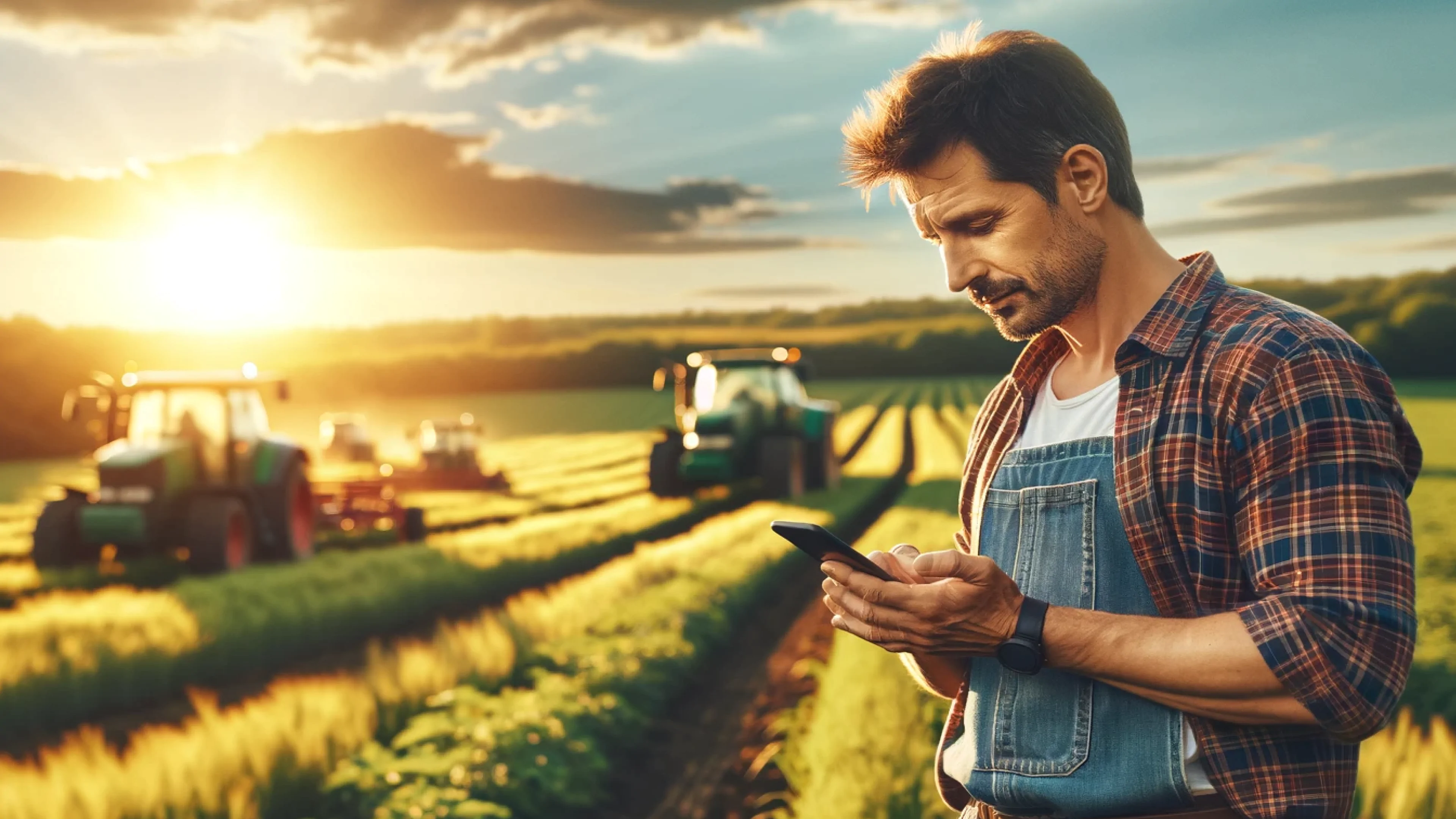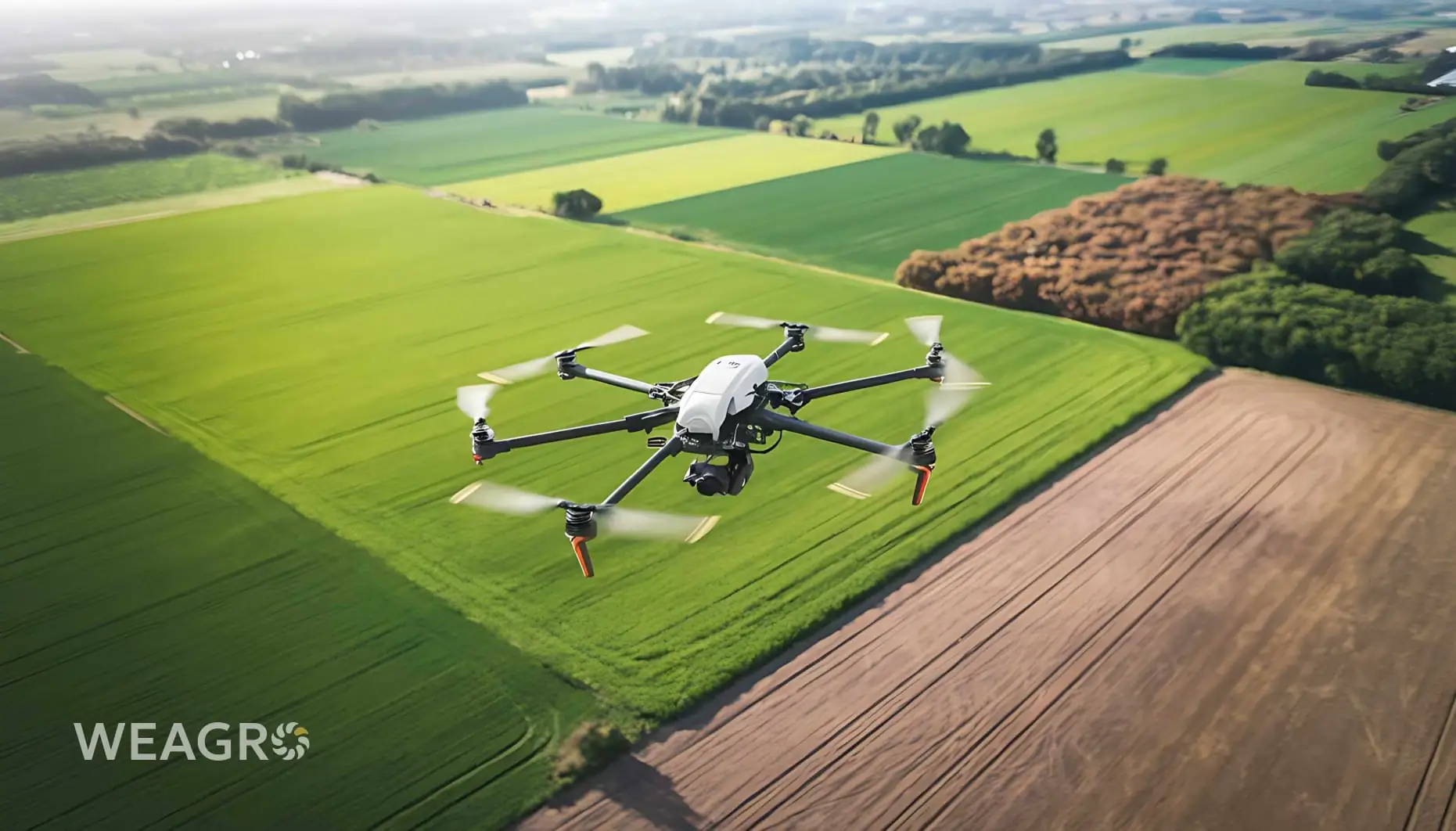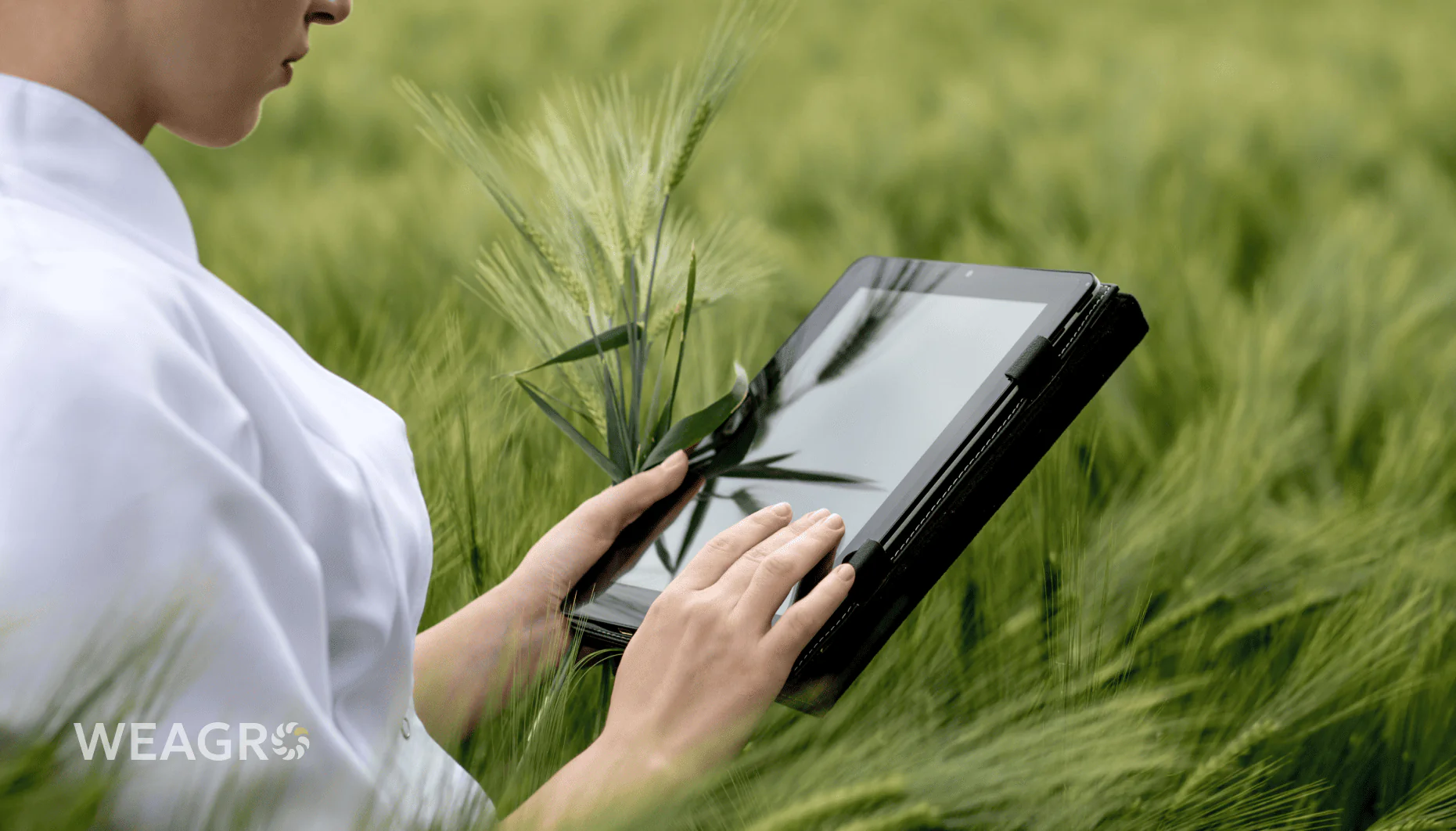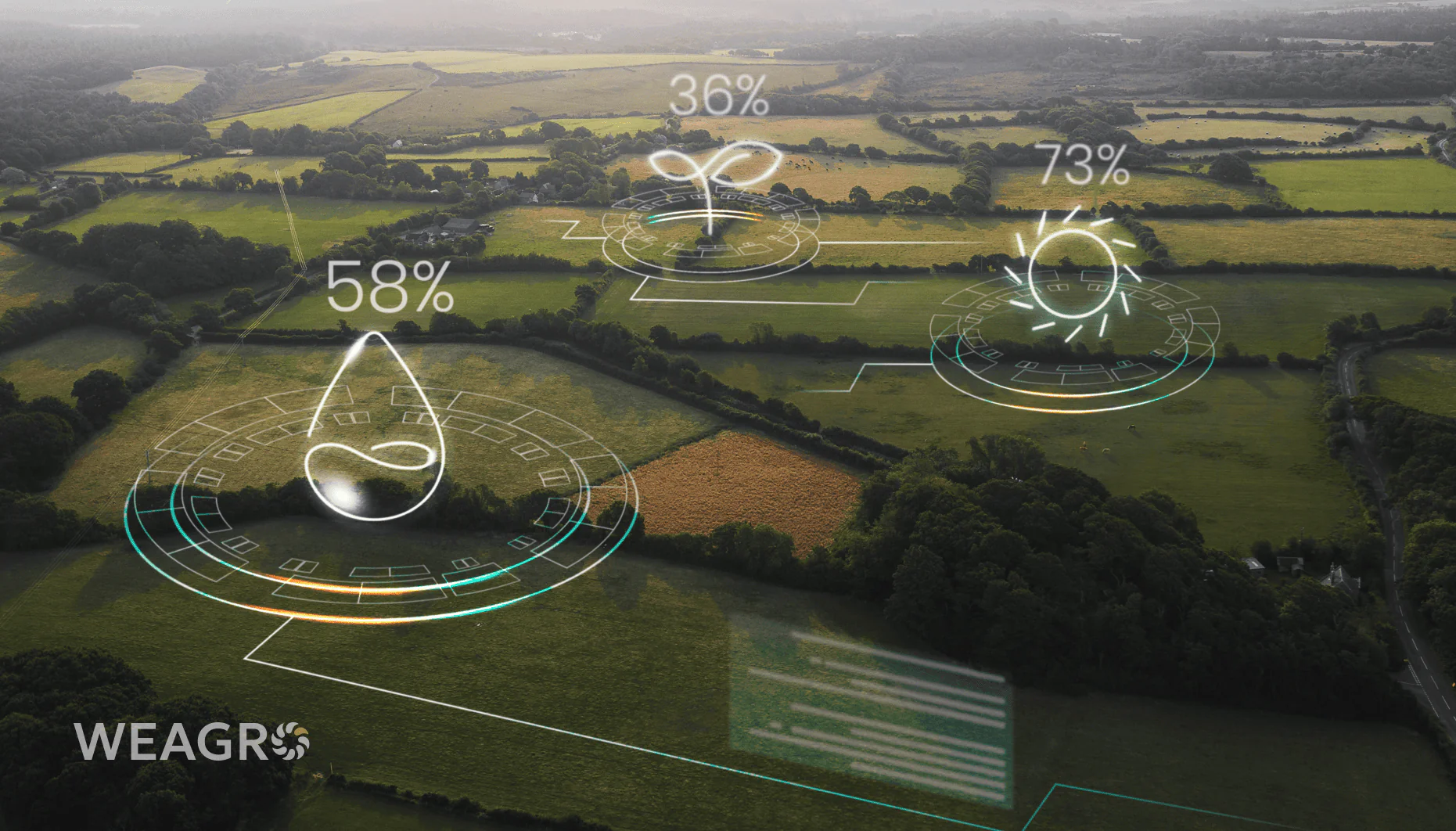The agricultural sector is actively changing and developing. The main emphasis is on a gradual shift from manual labor to automated and functional solutions. It is beneficial for agricultural industry representatives to learn more about what the Internet of Things is, and most importantly, what opportunities and prospects it opens. This will help choose a winning development strategy for the coming years, which will help secure leading positions in the chosen field in the future.
What is the Internet of Things
Internet of Things or IoT is a concept that involves connecting various physical devices via the internet, allowing them to interact and exchange data. The essence of the idea is to make objects ‘smart’ and interconnected, creating a unified integrated space for collecting and processing information, which is relevant for improving quality of life, optimizing processes, and increasing efficiency. Thus, the Internet of Things consists of devices united in one wireless network to solve specific tasks.
History and Essence of the Concept
The term itself appeared in 1999: technologist Kevin Ashton introduced the concept of real-time data collection through network connectivity in his Procter & Gamble presentation and gave it this name. The years 2008-2009 are considered its peak: during this period, the number of devices connected to the worldwide network exceeded the population of the entire planet. The concept of the Internet of Things took on new dimensions – it became part of modern human life, largely facilitated by three main factors:
- development of wireless technologies;
- reduction in sensor sizes;
- increase in computing power.
A good example is smartwatches. Compact and convenient, they are an integral part of the Apple or Android ecosystem. They constantly monitor data about their owner’s health and physical activity, and most importantly, transmit information to smartphones for further analysis.
Main Components
Understanding what the Internet of Things is and what it consists of will be helped by an overview of key components, each playing an important role in its functioning:
- devices – sensors for collecting environmental data: temperature, humidity, light, movement, as well as devices that perform actions based on received data: turning on lights or regulating temperature;
- connectivity – network protocols and other technologies for exchanging information between main components and central systems;
- information processing – cloud platforms that provide real-time data storage and analysis, as well as analytical tools for pattern detection and forecasting;
- interfaces – for IoT users, these are mobile and web applications that provide access to data, device management, and parameter settings, as well as programming interfaces for interaction between different systems and applications;
- security – data encryption for protection against unauthorized access, as well as mechanisms that restrict unauthorized users.
The IoT network is a concept that has enabled a significant step forward in technology. It has changed the very way humans interact with the surrounding world. This has increased productivity and energy efficiency across various sectors, and most importantly, automated most processes, reducing manual labor.
How the Internet of Things (IoT) Works
The main principle is to ensure comfortable interaction between devices with each other, and between humans and devices. What are the basic principles of IoT functioning?
- connecting objects to the network – various devices and objects will be connected to the network world, each with a unique network address;
- data exchange – components of the overall system can both receive data from the network and transmit their own data to other devices and systems;
- automated operation – objects function automatically, performing tasks according to set programs without the need for human intervention.
How does the Internet of Things work? In simplified form, this scheme looks like this: sensors and devices record key parameters, transmit them along the chain to central systems, and analytical tools and programs create graphs, reports, and predictive models, allowing both reaction to current events and forecasting them, preventing potential problems.
Advantages of the Internet of Things
When considering this concept from the perspective of its benefits for the agricultural sector, the following advantages should be highlighted:
- Increased yield – constant monitoring of all indicators provides farmers with accurate information about plant conditions to promptly take measures for optimal growth and development of agricultural crops.
- Resource use optimization – rational distribution of water, fertilizers, and other components helps avoid excess and waste, leading to reduced costs: money, time, and effort.
- Improved product quality – creating optimal conditions for growing plants and keeping animals, as well as timely detection of diseases and pests, helps significantly increase crop yields and provide proper care for livestock.
Read also: Energy-Saving and Resource-Saving Technologies in Agriculture
The advantages of the Internet of Things are numerous, but one of the main benefits in implementing this concept is sustainable development, which is especially important for agricultural sector representatives. Active increase in production volumes while reducing cultivation costs allows recovery of all process optimization expenses. IoT technologies enable more precise, efficient, and rational management of water and land resources, and most importantly, reduce the use of chemical fertilizers and pesticides, making an important step toward environmental sustainability.
Implementation of the Internet of Things in the Agricultural Sector
Placing weather stations in the field allows continuous monitoring of environmental conditions, which positively affects both the selection of agricultural crops and the creation of favorable conditions for their growth.
Sensors can also be used in greenhouses to control temperature, humidity, lighting, and adjust parameters depending on external conditions.
Disadvantages of the Internet of Things
Despite all the benefits of implementing this concept in the long term, certain drawbacks should be considered. Among them:
- High initial costs. Installing sensors, purchasing equipment, developing and integrating management systems require significant financial investments. This can be a serious obstacle for implementing Internet of Things technology by small farming operations with limited financial resources.
- Complexity in installation and maintenance. Setting up and maintaining the system in working order requires regular technical maintenance and calibration, which increases operational costs and requires additional effort.
- Compatibility with existing systems. During sequential project implementation, difficulties may arise with integrating equipment from multiple manufacturers using different standards and protocols.
All these difficulties can be easily resolved with agricultural financing provided by the online service WEAGRO. This is an excellent way to get the needed amount now and pay gradually. Thanks to this, farmers can enter into agreements with suppliers to purchase all necessary equipment with deferred payment. This fully compensates for the existing disadvantages of the Internet of Things.
Read also: What Is Installment Payment: Difference Between Credit and Installment
Use of the Internet of Things in Various Economic Sectors
This technology is relevant both in everyday life and in many other areas, including:
- industry;
- transport;
- energy;
- retail trade;
- logistics and warehousing;
- education;
- financial services;
- construction;
- hospitality business;
- telecommunications.
Smart devices have become an important part of daily life. And the use of the Internet of Things in various economic sectors can significantly simplify and optimize many processes, minimizing costs and reducing the amount of effort required to accomplish tasks.
Internet of Things in Agriculture
Farmers constantly face new challenges and difficulties, including climate change, unpredictable weather conditions, and one of the main current problems – difficulties in finding qualified workers. Therefore, the ability to reduce manual labor and, most importantly, automate work on farmland is an important contribution to business development. Internet of Things technology is a helping hand for the agricultural sector that can completely change the approach to conducting business, and most importantly, greatly simplify it.
Read also: Precision Farming in Ukraine: Definition and Prospects
Examples of Internet of Things Technology Use in the Agricultural Sector
Smart farming is a step towards the future, as well as an opportunity to stay ahead of competitors. Gradual process improvement allows for sequential implementation of new developments, installing sensors, irrigation systems, agricultural drones, and cloud platforms for data collection and storage, as well as decision-making based on conducted analysis. All these are components that the Internet of Things includes. Their use should be considered based on the successful experience of the Ukrainian agricultural sector.
Comprehensive Control
The right combination of sensors and detectors allows for constant monitoring of the situation on-site, and in case of deviations from set indicators, the user receives appropriate notifications. The list of relevant parameters includes:
- soil moisture;
- air temperature;
- light level.
The global network of internet-connected things allows responding to situations with just a few clicks, even without being physically present on the territory. Starting the irrigation system will help restore moisture balance so that plants are not threatened by drought.
Crop Management
Using drones with aerial photography capabilities, farmers can conduct precise territory surveys to assess current crop conditions. This enables quick identification of problem areas and, if necessary, conduct therapeutic or preventive treatment. Immediate reaction will quickly stop disease development or pest invasion. Additionally, pesticides won’t need to be used in areas unaffected by problems.
Livestock Monitoring
The IoT network is relevant not only in crop farming but also in livestock care. Farmers get complete control for assessing location, condition, and activity of animals. This is important for promptly changing housing conditions and controlling nutrition, which helps protect livestock from diseases.
Effective Forecasting
Constant data analysis through modern monitoring systems helps not miss important details and, most importantly, accurately assess future prospects. Electronic Internet of Things technologies are useful for properly choosing planting and subsequent harvesting times, as well as taking timely measures to neutralize possible risks.
Prospects for Internet of Things (IoT) Technology Development in Ukraine
The potential of this concept is enormous. It opens unique opportunities that allow complete transformation of the agricultural sector through rapid development of digital infrastructure. The future lies in technologies, and they will fully justify all investments. The Internet of Things is a rational investment that can significantly increase the efficiency and competitiveness of not only the agricultural sector but also the Ukrainian economy as a whole.
The only obstacle to implementing innovative solutions might be the high cost. But this problem is successfully solved by the online service WEAGRO – a unique online agricultural financing service that allows dividing the total amount into several payments, gradually paying for the product over 180 days. And thanks to payment deferral, you can start optimization now, without postponing this process indefinitely.









